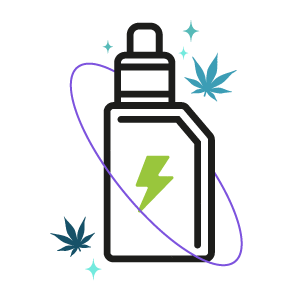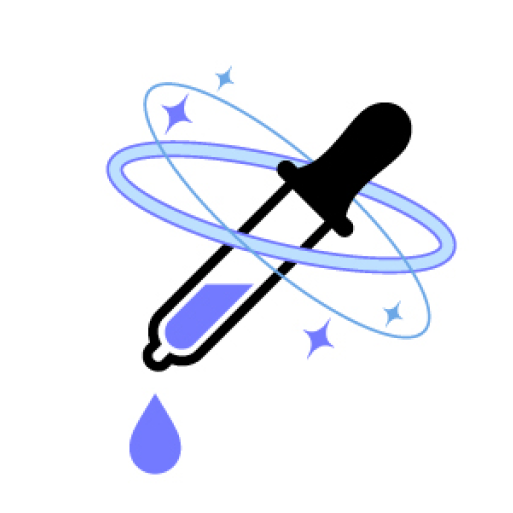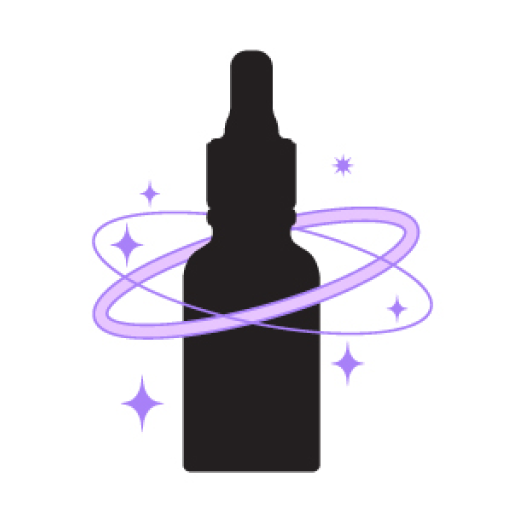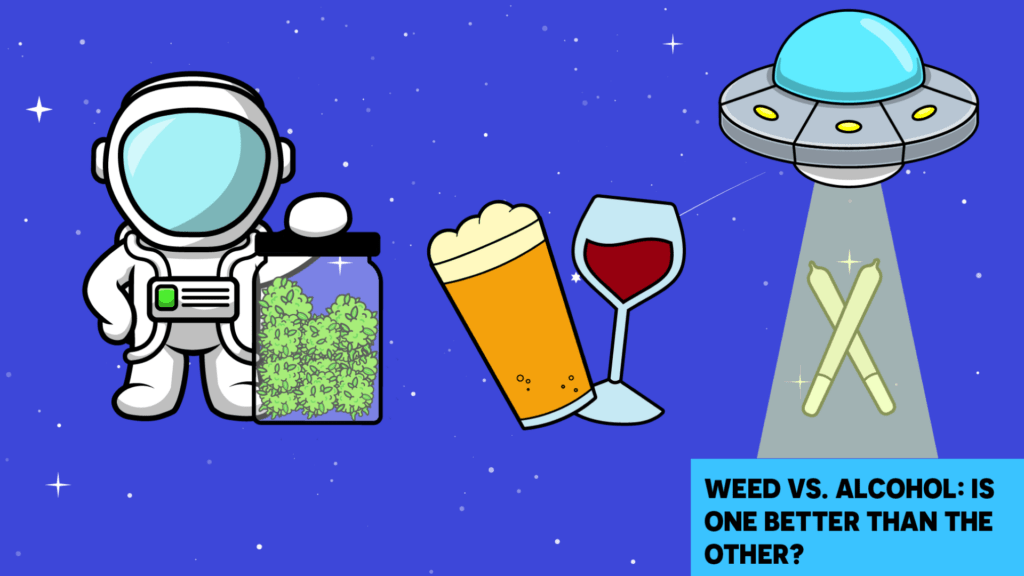THC vs. THC-A: Understanding What Are The Differences

Table of Contents
- What is THC-A?
- What is THC?
- Difference Between THC and THC-A
- Regulation and Labeling
- How is THC-A Converted Into THC?
- What is a “Good” THC-A Percentage?
- Conclusion
- FAQ
The cannabis plant is a complex and versatile organism that contains a multitude of compounds, each with its own unique properties and effects. Among these compounds, THC (tetrahydrocannabinol) and THC-A (tetrahydrocannabinolic acid) are two key players. Understanding the differences between THC and THC-A is crucial for anyone interested in the diverse world of cannabis. In this article, we will explore what THC vs THC-A are, the key distinctions between them, and understand is THC-A the same as THC.

What is THC-A?
Tetrahydrocannabinolic acid, or THC-A, is a non-psychoactive precursor to the well-known psychoactive compound THC (tetrahydrocannabinol) found in the cannabis plant. In its raw, unheated form, THC-A does not produce the euphoric effects commonly associated with marijuana consumption. However, it is only when heat is applied through processes like smoking or vaporization that THC-A undergoes decarboxylation, transforming into THC and activating its psychoactive properties.
As researchers delve into the diverse chemical constituents of cannabis, questions like “What is THC-A?” often arise. This compound is abundant in fresh and undried cannabis buds, and its potential therapeutic properties, distinct from THC, have garnered interest in the medical cannabis community. Some research suggests that THC-A may have anti-inflammatory, neuroprotective, and antiemetic effects, making it an intriguing focus for medicinal applications.
What is THC?
Tetrahydrocannabinol, commonly known as THC, is a psychoactive compound found in the cannabis plant. It is one of over 100 cannabinoids present in cannabis, and it is primarily responsible for the plant’s euphoric and mind-altering effects. THC interacts with the endocannabinoid system in the human body, specifically with the CB1 receptors in the brain and central nervous system. This interaction leads to the release of dopamine, a neurotransmitter associated with pleasure and reward, producing the characteristic “high” or euphoria that is often associated with marijuana use. Apart from its recreational use, THC has also been studied for its potential medical benefits, including pain relief, appetite stimulation, and nausea reduction, making it a subject of interest in the field of medical cannabis research. However, it’s important to note that THC can also have side effects, and its use is regulated in many places due to its psychoactive properties.
Difference Between THC and THC-A
THC, or tetrahydrocannabinol, and THC-A, or tetrahydrocannabinolic acid, are two distinct compounds found in the cannabis plant, each with its own set of properties and effects. It’s crucial to understand the differences between these two substances, as they play distinct roles in the overall cannabis experience. THC-A products have gained popularity in recent years due to their potential therapeutic benefits. Unlike THC, THC-A does not produce the euphoric effects commonly associated with cannabis use. Instead, it is believed to offer anti-inflammatory, anti-nausea, and neuroprotective properties without the intoxicating effects.

Psychoactivity
THC is psychoactive and produces the euphoric effects commonly associated with cannabis use.
- THC-A, in its raw form, is non-psychoactive and does not induce a “high.”
- Decarboxylation.
- THC-A needs to undergo decarboxylation to become THC, which typically involves exposure to heat.
- THC is the result of THC-A undergoing decarboxylation, making it available for binding to cannabinoid receptors in the body.
Consumption Methods
Consumption methods for THC, the psychoactive compound in cannabis, vary widely to accommodate individual preferences and health considerations. Smoking and vaping are common methods, where THC is rapidly absorbed through the lungs, providing a quick onset of effects. Ingesting cannabis products, often in the form of edibles, is another popular option. However, for the psychoactive effects to occur, the cannabis must undergo decarboxylation, a process that activates THC by heating it. On the other hand, raw cannabis contains THC-A, the non-psychoactive precursor to THC. This compound is commonly consumed through juicing or in products that have not been heated, offering an alternative for individuals seeking the potential therapeutic benefits of cannabis without the euphoric high. These diverse consumption methods reflect the evolving landscape of cannabis use, catering to a range of preferences and medicinal needs.
The Entourage Effect
One aspect of the THC vs THC-A discussion involves the entourage effect, a phenomenon where various cannabinoids and terpenes work together synergistically to enhance the overall therapeutic effects of cannabis. While THC is often the primary focus due to its psychoactive nature, THC-A also plays a role in the entourage effect, contributing to the overall therapeutic potential of the cannabis plant.
Research suggests that THC-A may have anti-inflammatory, neuroprotective, and antiemetic properties, among others. Some medical cannabis users prefer products with higher levels of THC-A and lower levels of THC, seeking the potential therapeutic benefits without the accompanying psychoactivity. This nuanced approach allows individuals to tailor their cannabis experience based on their specific needs and preferences.
Medical Applications
Both THC and THC-A have shown promise in various medical applications, albeit in different ways. THC is well-known for its analgesic (pain-relieving), antiemetic (anti-nausea), and appetite-stimulating properties. It is commonly prescribed to patients undergoing chemotherapy, suffering from chronic pain, or dealing with appetite loss due to conditions like HIV/AIDS.

On the other hand, THC-A has gained attention for its potential anti-inflammatory and neuroprotective properties. Some patients prefer THC-A-rich products for conditions such as arthritis, autoimmune disorders, and neurodegenerative diseases. While more research is needed to fully understand the therapeutic potential of THC-A, anecdotal evidence and preliminary studies suggest that it may offer unique benefits.
Legality
The legal status of THC and THC-A varies across jurisdictions. In many places, THC remains a controlled substance due to its psychoactive effects, while THC-A is often legal since it does not produce a “high” in its raw form. However, it’s essential to note that laws and regulations are subject to change, and individuals should stay informed about the specific rules in their region.
Consumption Choices
Consumers seeking specific effects from cannabis can make informed choices based on the THC and THC-A content in products. For those desiring the classic euphoria associated with cannabis, THC-dominant strains or products are suitable. Conversely, individuals looking for therapeutic benefits without the psychoactive effects may opt for products with higher levels of THC-A or a balanced THC-to-THC-A ratio.
Methods of Consumption
The method of cannabis consumption also plays a significant role in determining the balance of THC and THC-A in the body. Smoking and vaporizing cannabis quickly decarboxylate THC-A into THC, providing a faster onset of psychoactive effects. In contrast, consuming raw cannabis, such as in juices or salads, allows for the intake of THC-A without the psychoactive outcomes.
Additionally, edibles and tinctures provide an alternative for those who wish to avoid smoking. These products often undergo decarboxylation during the manufacturing process, converting THC-A into THC. Consumers should be aware of the cannabinoid content in the products they choose and the potential onset time and duration of effects associated with different consumption methods.
Regulation and Labeling
As the cannabis industry evolves, regulations and labeling practices are becoming more standardized. In regions where cannabis is legal, products typically undergo testing for cannabinoid content, ensuring consumers have accurate information about THC and THC-A levels. Reading product labels and understanding the significance of THC vs THC-A can empower consumers to make informed decisions about their cannabis experience.
How is THC-A Converted Into THC?
THC-A undergoes transformation into THC via the process of decarboxylation, a chemical reaction facilitated by heat or light, aiming to eliminate one carboxyl group from cannabinoids. This conversion, referred to as “decarbing,” enhances the ability of various cannabinoids to interact more effectively with your endocannabinoid receptors.

Recall the earlier mention of THC-A possessing an extra carboxyl group compared to THC. Through decarboxylation, this additional carboxylic acid group is eliminated, leading to the conversion of THC-A into THC. The resulting alteration in its chemical structure aligns it perfectly with CB1 receptors, paving the way for the characteristic, pleasurable, and mind-altering effects associated with THC.
Decarboxylation takes place when raw cannabis is exposed to heat, either from sunlight, elevated room temperatures, or direct heat exposure through methods such as smoking, vaping, concentrates, or DIY carboxylation.
What is a “Good” THC-A Percentage?
Determining potency based on THC-A percentage can be confusing due to the absence of a standardized method in the cannabis industry for presenting testing data to consumers. Reading labels and lab reports can be challenging as a result.
Potency testing involves two distinct methods: liquid chromatography (LC) and gas chromatography (GC). Without delving into technical details, it’s important to note that each technique yields different potency values for the same cannabis sample. This discrepancy arises because the high temperatures in the GC process lead to the decarboxylation of most THC-A, unlike the LC process, which does not require elevated temperatures. Consequently, the reported THC-A and THC content will vary between these two methods.

For a clearer understanding of how a particular product’s potency will impact your cannabis experience, our best recommendation is to consult with one of our dispensary staff members, who are well-versed in guiding customers through the diverse range of offerings available, including those from Elyxr wholesale. Our knowledgeable team can provide valuable insights into the unique attributes, ensuring you make an informed choice that aligns with your preferences and desired effects
Conclusion
In conclusion, the distinctions between THC and THC-A are critical for anyone navigating the world of cannabis. Whether for recreational or medical purposes, understanding how these cannabinoids interact with the body allows individuals to make choices aligned with their preferences and needs. As research on cannabis continues to progress, the nuanced effects of THC and THC-A, both individually and in conjunction with other compounds, will contribute to a more comprehensive understanding of the plant’s potential benefits.
The entourage effect underscores the importance of viewing cannabinoids as part of a holistic system, each contributing to the overall therapeutic profile of cannabis. As legalization and research efforts expand, individuals can look forward to a more nuanced and personalized approach to cannabis consumption, fostering a greater appreciation for the plant’s complexity and potential.
FAQ
What is the purpose of THC-A?
THC-A, or tetrahydrocannabinolic acid, is a non-psychoactive precursor to THC (tetrahydrocannabinol) found in raw cannabis. When heated, THC-A undergoes a process called decarboxylation and converts into THC, the compound responsible for the psychoactive effects of cannabis. Some people consume THC-A for its potential therapeutic benefits, although research on its specific effects is still in the early stages.
What percent of THC-A is high?
The potency of THC-A in cannabis strains can vary widely. A high percentage of THC-A would typically be considered above 20%, but it’s essential to note that the overall effects depend on various factors, including individual tolerance, method of consumption, and the presence of other cannabinoids and terpenes.
Is THC-A Indica or Sativa?
THCA is not exclusive to either Indica or Sativa strains. Both types of cannabis plants can produce THC-A. The classification of cannabis as Indica or Sativa is more related to the plant’s physical characteristics and growth patterns rather than the specific cannabinoids it contains.
What is the best way to use THC-A?
The most common way to consume THC-A is through the consumption of raw or lightly processed cannabis, such as in smoothies or salads. If the goal is to experience the psychoactive effects, decarboxylation is necessary. This can be achieved through methods like smoking, vaping, or baking cannabis-infused edibles.
Does THC-A cause anxiety?
The relationship between THC-A/THC and anxiety can vary from person to person. Some individuals may experience anxiety or paranoia as a side effect of THC consumption, while others may find relief from anxiety symptoms. It’s crucial to start with low doses, especially if you are new to cannabis, and monitor your body’s response. If you have a history of anxiety, it’s advisable to consult with a healthcare professional before using cannabis products.











